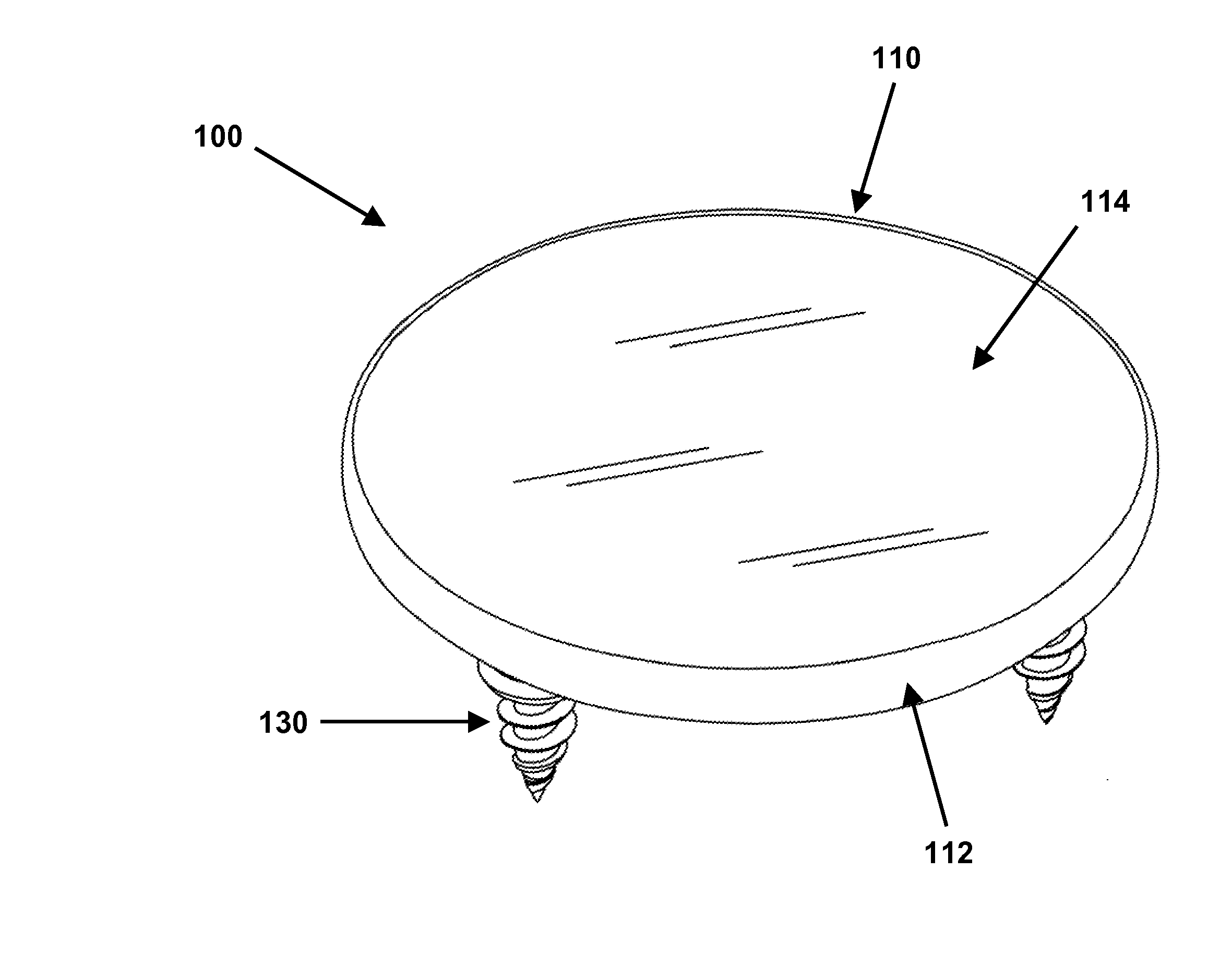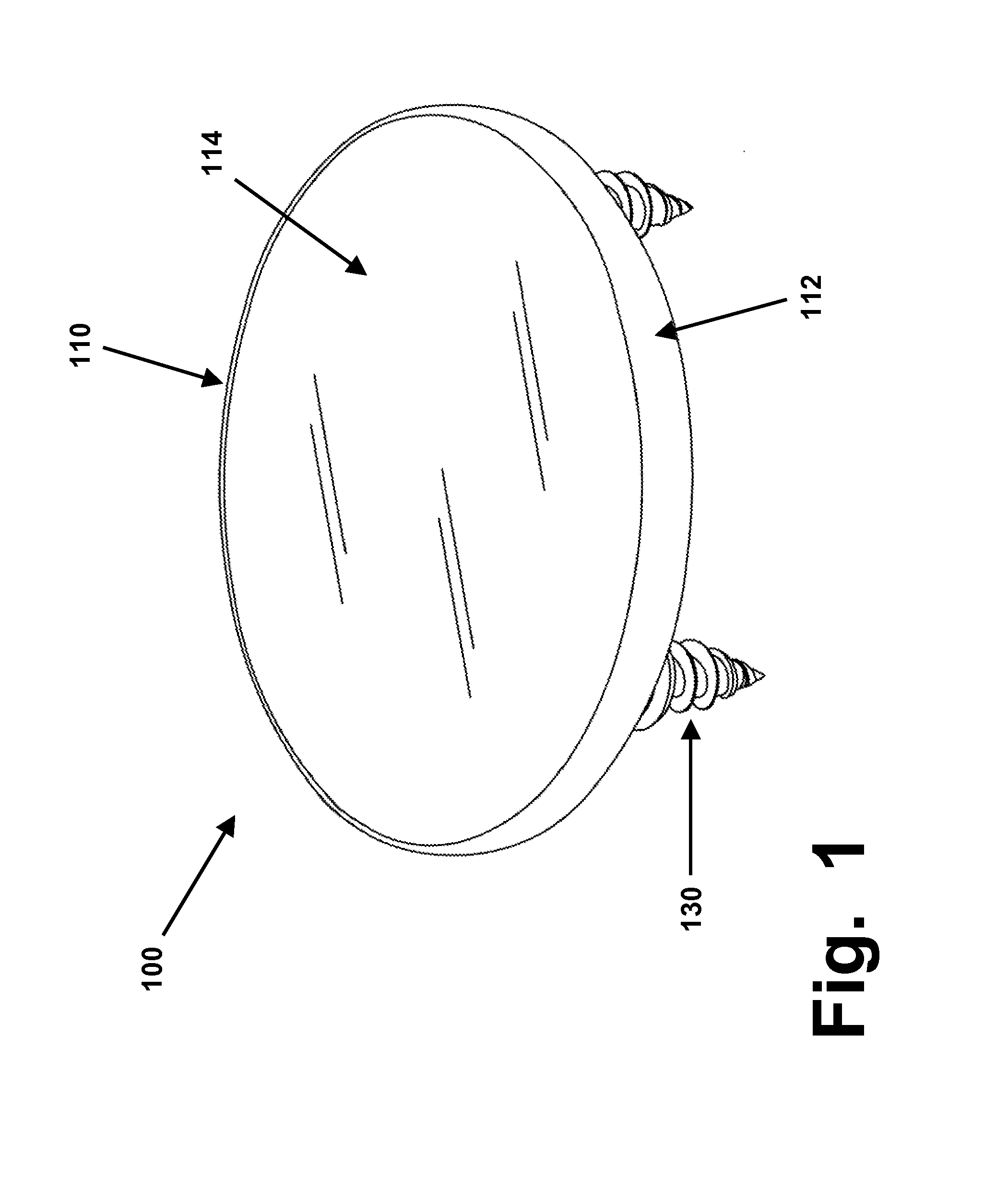Rim Anchoring Systems for Flexible Surgical Implants for Replacing Cartilage
a flexible surgical implant and rim anchoring technology, applied in the field of surgical implants, can solve the problems of nitinol devices that cannot make self-directed transitions into shorter or longer lengths, other shapes, and other different shapes, and achieve the effect of greater strength and stability of implants
- Summary
- Abstract
- Description
- Claims
- Application Information
AI Technical Summary
Benefits of technology
Problems solved by technology
Method used
Image
Examples
Embodiment Construction
[0049]As briefly summarized above, a surgical implant 100, designed for replacing a relatively large segment of hyaline cartilage in a synovial joint such as a knee, shoulder, hip, etc.) is illustrated in FIGS. 1-3. Scaled-down implants with the same structures described herein, but with smaller diameters and thicknesses (and with only one or two anchoring screws, pins, or other components, which also can be smaller) also can be created for replacing hyaline cartilage in smaller joints, such as in thumbs, fingers, wrists, etc.
[0050]For simplicity of illustration, implant 100 is shown as having a generally round and flat shape. In actual use, any such implant designed for a large joint should have a molded and shaped articulating surface that will closely emulate the size and shape of the cartilage segment that is being replaced by the implant. The sizes and shapes of such cartilage surfaces (such as, within a knee joint, the medial and lateral femoral runners, the tibial plateau, an...
PUM
 Login to View More
Login to View More Abstract
Description
Claims
Application Information
 Login to View More
Login to View More - R&D
- Intellectual Property
- Life Sciences
- Materials
- Tech Scout
- Unparalleled Data Quality
- Higher Quality Content
- 60% Fewer Hallucinations
Browse by: Latest US Patents, China's latest patents, Technical Efficacy Thesaurus, Application Domain, Technology Topic, Popular Technical Reports.
© 2025 PatSnap. All rights reserved.Legal|Privacy policy|Modern Slavery Act Transparency Statement|Sitemap|About US| Contact US: help@patsnap.com



